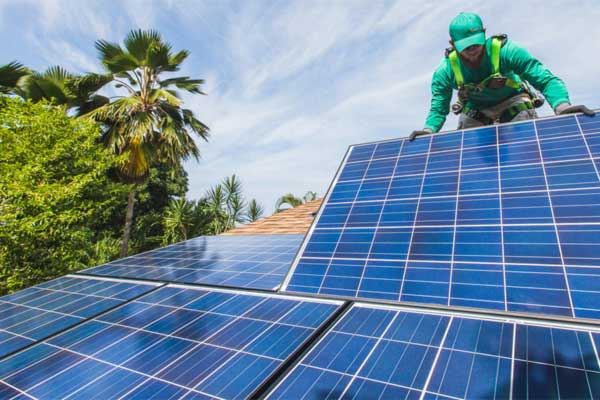The Trump administration claim that renewable energy threatens the stability of the US power grid is ludicrous
Recent statements from Washington suggest that grid reliability will be threatened if old power plants using coal continue to be replaced by modern power plants using natural gas, wind power, and solar power. This is simply not true.
In April, energy secretary Rick Perry ordered a study on the reliability of the US electric grid amid “significant changes” happening in the power system. He said those changes included the “erosion of critical baseload resources”—namely coal and nuclear—and the “market distorting effects of federal subsidies,” by which he means support for wind and solar.
A leaked draft of the study last week—compiled by career Energy Department experts—said renewable energy is not harming the grid. The final version is due any day now, but Perry’s office indicated it might be quite different from the draft, fueling speculation that the study is merely an attempt to prop up coal and curtail the use of renewables. But regardless of its intentions, this notion of baseload power is outdated.
Hawaii’s Push to 100% Renewable Energy Presents Opportunity for Solar Energy
Hawaii has long been the U.S. leader in solar energy deployment, despite the fact that the state’s renewable energy efforts rarely get national attention. Solar energy, in particular, makes sense in Hawaii because of the state’s abundant sunshine and high electricity prices (otherwise utilities burn imported fossil fuels). Even energy storage is an area where Hawaii is charging ahead of most other states. But being a leader isn’t enough.
We now know that Hawaii will be the first state to take a real crack at being powered 100% renewable energy, something regulators have been pushing for some time. And utility Hawaiian Electric Industries is finally on board with the plan.
The Hawaiian Public Utilities Commission wanted Hawaiian Electric to reach 100% renewable energy by 2045 and had twice rejected plans it didn’t feel went far enough. This month, it approved the company’s plan, which is actually to reach 100% renewables by 2040.
A Twist in the Drive to Pave Roads With Solar Panels
Our roads could generate energy, melt snow, direct traffic, and even drive our cars, if some of Scott and Julie Brusaw’s visions become reality.
The couple behind the Sandpoint, Idaho-based company Solar Roadways attracted many fans three years ago with a video and online fundraising campaign that drew more than $2 million.
With those assets, plus funding from the U.S. Department of Transportation, the team has been able to refine their “smart” road tiles, which contain solar cells, LED lights, a heating element, and wireless communication. Earlier this year, they completed a public installation of 30 panels in Sandpoint, complete with the ability to display an image of Earth. In the coming months, they will install small arrays in Colorado and Maryland. Yet they see much bigger potential for the panels than just using paved space to generate energy for the grid.
Solar industry worried about tariff
U.S. solar companies are snapping up cheap imported solar panels ahead of a trade decision by the Trump administration that could drive up costs and cloud the fortunes of one of the economy’s brightest stars.
Domestic consumers and businesses have been embracing solar energy at a furious pace — thanks to a big assist from China. Low-cost photovoltaic cells and panels made in China and other Asian countries have helped drive down costs by around 70 percent since 2010, enabling more Americans to go solar.
Installations in the United States last year hit a record. Jobs are mushrooming too. The domestic industry now employs more than 260,000 people, according to The Solar Foundation, most of them construction workers hammering panels on rooftops and erecting utility-scale solar plants in the nation’s blistering deserts.















Comments